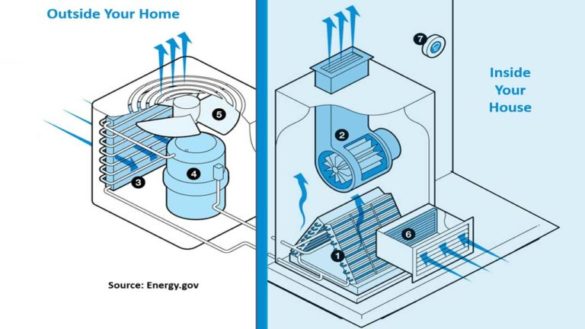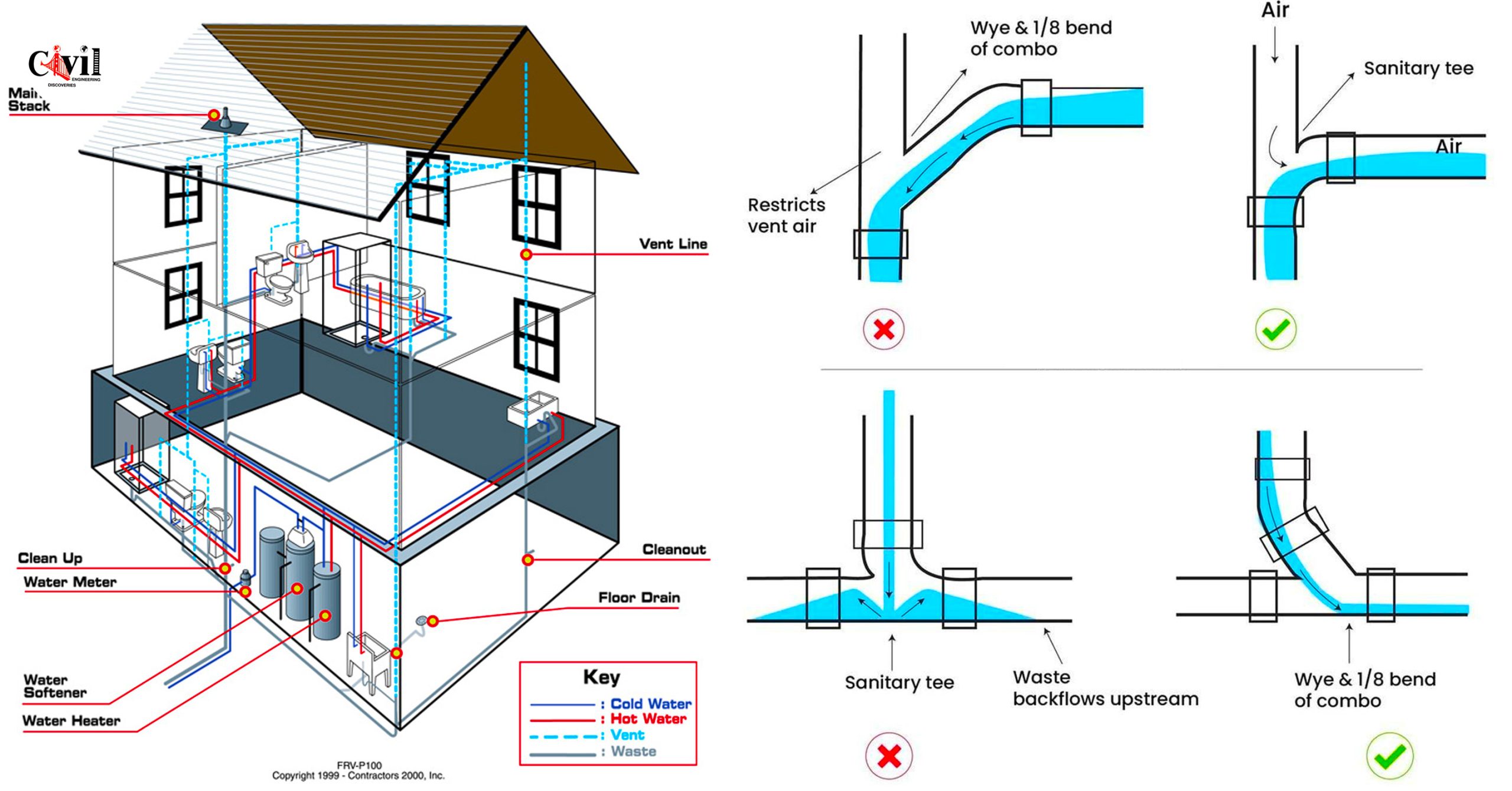Exploring The Structure of Your House's Plumbing System
Exploring The Structure of Your House's Plumbing System
Blog Article
We have stumbled upon this great article on Understanding Your Home's Plumbing Anatomy down the page on the net and thought it made good sense to share it with you here.

Comprehending just how your home's plumbing system functions is essential for each home owner. From delivering tidy water for alcohol consumption, cooking, and showering to securely getting rid of wastewater, a well-maintained plumbing system is critical for your family's health and wellness and convenience. In this thorough guide, we'll check out the detailed network that makes up your home's plumbing and deal pointers on maintenance, upgrades, and dealing with usual concerns.
Introduction
Your home's pipes system is more than just a network of pipes; it's a complicated system that guarantees you have accessibility to clean water and efficient wastewater removal. Understanding its parts and how they work together can assist you stop pricey repairs and ensure whatever runs efficiently.
Standard Elements of a Plumbing System
Pipelines and Tubes
At the heart of your pipes system are the pipes and tubing that carry water throughout your home. These can be made from different products such as copper, PVC, or PEX, each with its benefits in terms of sturdiness and cost-effectiveness.
Fixtures: Sinks, Toilets, Showers, etc.
Fixtures like sinks, toilets, showers, and bath tubs are where water is utilized in your house. Comprehending just how these components attach to the pipes system aids in detecting troubles and intending upgrades.
Shutoffs and Shut-off Factors
Shutoffs regulate the circulation of water in your pipes system. Shut-off shutoffs are vital during emergencies or when you require to make repair services, enabling you to separate parts of the system without interfering with water circulation to the whole home.
Supply Of Water System
Main Water Line
The primary water line connects your home to the municipal water supply or a private well. It's where water enters your home and is dispersed to different fixtures.
Water Meter and Stress Regulatory Authority
The water meter measures your water use, while a stress regulatory authority makes sure that water flows at a secure stress throughout your home's plumbing system, protecting against damage to pipes and components.
Cold Water vs. Hot Water Lines
Recognizing the distinction between cold water lines, which supply water straight from the primary, and hot water lines, which bring heated water from the water heater, assists in fixing and preparing for upgrades.
Drainage System
Drain Pipes Pipeline and Traps
Drain pipelines bring wastewater away from sinks, showers, and bathrooms to the sewer or septic system. Catches avoid sewage system gases from entering your home and also catch particles that could cause obstructions.
Air flow Pipelines
Air flow pipes enable air right into the drain system, protecting against suction that can slow down water drainage and trigger catches to empty. Correct air flow is essential for preserving the integrity of your plumbing system.
Relevance of Appropriate Water Drainage
Guaranteeing correct drainage stops back-ups and water damage. On a regular basis cleaning drains pipes and keeping traps can avoid costly repair services and expand the life of your plumbing system.
Water Heater
Types of Water Heaters
Hot water heater can be tankless or traditional tank-style. Tankless heating units warm water as needed, while containers store heated water for prompt use.
Upgrading Your Pipes System
Factors for Updating
Upgrading to water-efficient components or changing old pipes can improve water high quality, lower water bills, and enhance the worth of your home.
Modern Pipes Technologies and Their Advantages
Check out modern technologies like clever leakage detectors, water-saving toilets, and energy-efficient hot water heater that can conserve money and minimize ecological impact.
Cost Considerations and ROI
Determine the ahead of time expenses versus lasting financial savings when considering plumbing upgrades. Numerous upgrades pay for themselves with minimized energy expenses and less repair work.
How Water Heaters Connect to the Plumbing System
Understanding exactly how water heaters link to both the cold water supply and warm water distribution lines aids in diagnosing concerns like inadequate warm water or leaks.
Upkeep Tips for Water Heaters
Routinely purging your water heater to get rid of debris, checking the temperature level setups, and checking for leaks can extend its life-span and boost energy efficiency.
Common Pipes Problems
Leaks and Their Causes
Leakages can happen due to aging pipelines, loose fittings, or high water pressure. Resolving leaks promptly protects against water damages and mold development.
Obstructions and Obstructions
Clogs in drains pipes and bathrooms are frequently brought on by purging non-flushable items or a build-up of oil and hair. Utilizing drainpipe screens and being mindful of what drops your drains can protect against blockages.
Signs of Pipes Troubles to Look For
Low tide pressure, slow-moving drains, foul odors, or uncommonly high water costs are indications of possible pipes issues that need to be attended to without delay.
Pipes Maintenance Tips
Routine Inspections and Checks
Set up yearly plumbing examinations to catch concerns early. Search for signs of leaks, deterioration, or mineral accumulation in taps and showerheads.
DIY Maintenance Tasks
Basic tasks like cleansing faucet aerators, checking for commode leaks making use of dye tablets, or insulating subjected pipes in chilly environments can stop significant pipes concerns.
When to Call an Expert Plumbing Technician
Know when a pipes concern requires specialist knowledge. Trying complex repair services without proper understanding can lead to more damages and higher repair work prices.
Tips for Reducing Water Usage
Basic habits like dealing with leaks promptly, taking shorter showers, and running complete lots of laundry and meals can preserve water and lower your energy bills.
Eco-Friendly Plumbing Options
Think about lasting plumbing materials like bamboo for flooring, which is durable and green, or recycled glass for countertops.
Emergency Preparedness
Actions to Take Throughout a Pipes Emergency situation
Know where your shut-off valves are located and exactly how to switch off the water in case of a ruptured pipeline or major leak.
Importance of Having Emergency Situation Calls Helpful
Keep contact details for local plumbers or emergency solutions readily available for quick reaction during a plumbing dilemma.
Environmental Impact and Conservation
Water-Saving Fixtures and Home Appliances
Setting up low-flow taps, showerheads, and bathrooms can dramatically lower water usage without compromising efficiency.
Do It Yourself Emergency Situation Fixes (When Relevant).
Temporary fixes like using duct tape to spot a dripping pipe or positioning a container under a dripping tap can reduce damage until a specialist plumbing gets here.
Conclusion.
Understanding the anatomy of your home's pipes system encourages you to keep it properly, conserving time and money on repairs. By following normal upkeep regimens and remaining notified about modern pipes innovations, you can ensure your plumbing system runs effectively for years to come.
Understanding Your Home Plumbing System: A Comprehensive Guide
Plumbing System: The Lifeline of Your Home
At its core, the plumbing system is designed to perform two primary functions: bring fresh water into your home and remove wastewater. The system is a network of pipes, fixtures, and other components that transport water and sewage. Residential plumbing systems include potable water supply lines, drain-waste-vent (DWV) systems, and various plumbing fixtures that make water use in daily tasks possible.
Key Components:
Water Supply: This part of your plumbing system brings municipal water into your home, passing through the main water supply line. It s responsible for supplying all water needs, from drinking to bathing.
Drainage System: It carries waste and water away from your home to the sewer or septic system. This system includes all the piping within your home that leads to external sewage or septic systems.
Vent System: An essential yet often overlooked component, the vent system allows sewer gases to escape and lets air into the drainpipes, ensuring water and waste move correctly through the system.
Fixture: More Than Just Taps and Toilets
Plumbing fixtures are the most interactive parts of the plumbing system, including faucets, showers, toilets, and sinks. Each fixture is connected to the plumbing system and plays a role in either the delivery of freshwater or the disposal of waste and wastewater.
Types of Fixtures:
Faucets and Sinks: Used for washing hands, dishes, and other daily water needs. Toilets: Dispose of human waste through the sewage system. Bathtubs and Showers: Provide bathing facilities, requiring both hot and cold water supply. Water Supply: The Source of Life
The water supply system is a critical component, ensuring that potable water is available throughout your home for various uses, including drinking, cooking, and cleaning. This system consists of pipes that distribute water to different parts of the house, controlled by valves to regulate the water flow.
Types of Plumbing: Materials and Methods
Various types of plumbing systems and materials are used in residential settings, each with its advantages and applications. From copper and PVC pipes for water supply to cast iron and ABS for drainage, the choice of materials can impact the longevity and efficiency of your plumbing system.
https://intownplumbingtx.com/articles/home-plumbing-system-guide/

I found that blog posting about Understanding Your Home's Plumbing Anatomy while exploring the search engines. Enjoyed our blog posting? Please share it. Help someone else check it out. Many thanks for taking the time to read it.
This Page Report this page